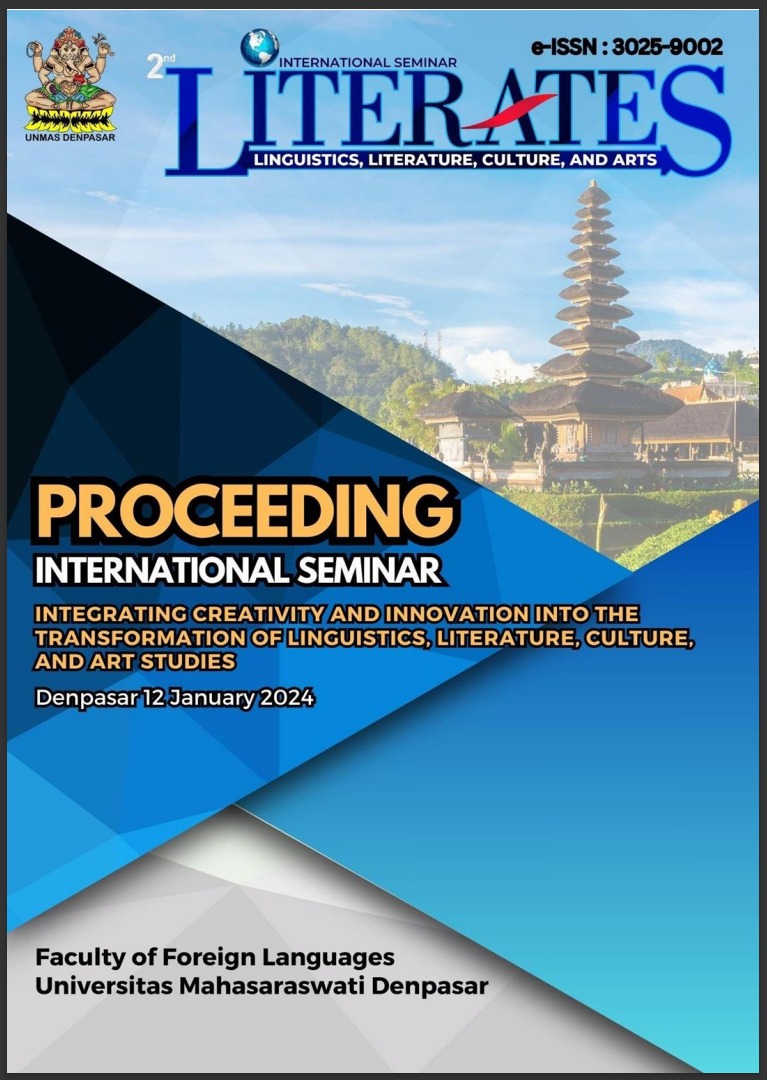CONTRASTIVE ANALYSIS OF JAPANESE AND INDONESIAN COMPOUND WORDS
Keywords:
Keywords: construction, meaning, compound, contrastiveAbstract
This study analyzes the similarities and differences between Japanese and Indonesian compound words based on their construction and meanings. The data was collected from Japanese and Indonesian official news websites like Asahi Shinbun and Kompas through observation and note-taking techniques. The data were analyzed using the distribution method. The theory was used to analyze the contrastivities by using the morphology theory by Chaer (2008), Katamba (1993), and Kageyama (2016). This study's results show that 10 compound words formed in Japanese and Indonesian have similar meanings. Based on the construction, both have different types of combinations including compound nouns, adjectives, and verbs. The difference in construction is the Japanese compound can have a phonetical change calledrendaku. Based on the meaning, both in Japanese and Indonesian compound it can be divided into two categories: endocentric and exocentric compound. However, there are some compound that does not have similar idiomatical meaning even though its constructed using the same lexeme in both languages.






